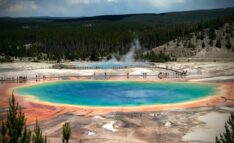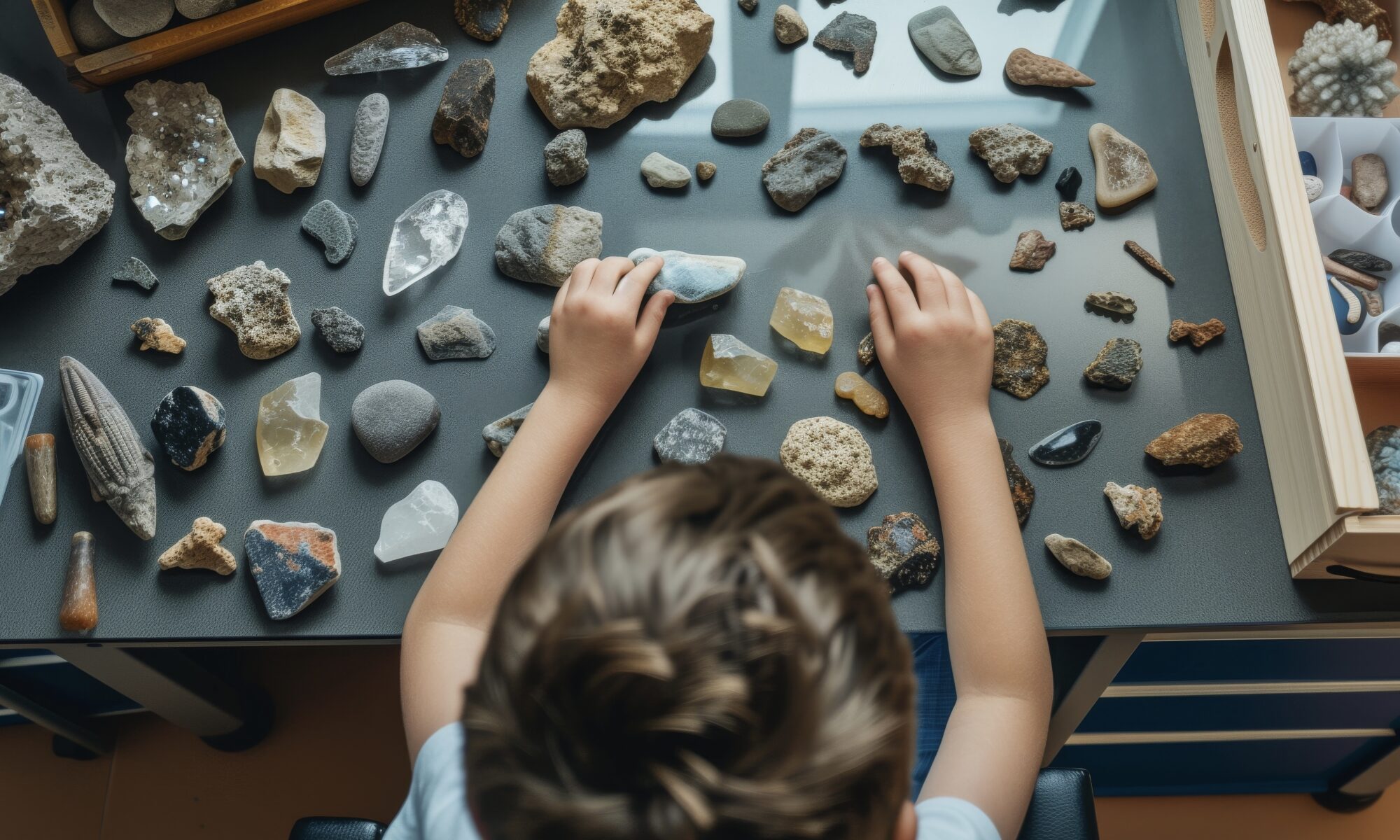Critical Thinking: Metrics and Methods
Dr. Sabrina Weiss
Navigating the Challenges of Information in the Digital Age: The Role of Critical Thinking
In an era where the sheer volume of information available to students is overwhelming, educators face the daunting task of helping learners make sense of the world around them. Unlike the pre-Internet age, when access to credible information was more limited and manageable, today’s students are bombarded by vast, often conflicting data from a variety of sources. This shift has created an environment where students struggle not only with information overload but with how to evaluate, question, and engage with what they encounter. In this context, the importance of revisiting and reinforcing the concept of critical thinking has never been more urgent. Critical thinking, when properly cultivated, provides a framework for students to navigate complex information, evaluate sources, and engage in thoughtful, reflective inquiry—skills essential for both academic and personal growth.
The Evolving Challenges of Information and Authority in the Digital Age
For those of us who remember the time before the Internet (and who don’t automatically think of it as “the Dark Ages”), it is apparent that today’s learners face challenges that never even occurred to us. Our biggest concerns were about obtaining access to enough static resources like books, magazines, and microfilm to write our research papers. The evening news that aired on network television was generally accepted as reasonably credible and authoritative. And experts were generally seen as experts – physicians, scientists, engineers, agency workers. Today, though, nothing is as it seems. While some choose to blame postmodernism (and other post-y thought revolutions) for the upheaval of epistemological authority, what matters is not how this happened, but “where do we go from here?”
I have seen myself and am confident that you have also seen students struggling to reconcile the nearly infinite deluge of information and data that surround them today. Many of my students engaged in behaviors that I felt were troubling, or antithetical to learning – most notably attempting to discredit or dismiss material we discussed in class as “biased.”
The Struggle to Cope with Information Overload
Indeed, “bias” has become a type of four-letter word that, like other expletives, my students have taken to flinging around in an apparent power play. But this is not defiance; it’s coping. Our students are trying to COPE with the massive amount of information around them paired with few effective ways to not just filter, but to create useful filters for themselves while also staying open to learning new things that may be troubling or uncomfortable for them.
I am not talking about the “safe space” issue – at least not here and now (I am happy to explore this topic further at another time). I am talking about utilizing a way of evaluating, sorting, and engaging with information that on face is not as it may appear through the cognitive and psychological lenses of students – both tempting but poorly formed ideas and upsetting but valid ideas. In this, I believe that revisiting the concept and practice of “critical thinking” holds value.

Critical Thinking Defined
Often credited with an early discussion of critical thinking (also described as “reflective thinking”), John Dewey, American philosopher of pragmatism and educational reformer, defined it as:
“Active, persistent and careful consideration of any belief or supposed form of knowledge in the light of the grounds that support it, and the further conclusions to which it tends” (1910).
In philosophical fashion, John Dewey also describes what is NOT critical thinking: immediate acceptance of an explanation without reflection or judgement, nor is criticism driven by dogged political beliefs. This is not to say that political concerns cannot drive critical inquiry; Paolo Friere, who wrote Pedagogy of the Oppressed (1968), described “critical pedagogy” as a way to give students tools to help them “recognize connections between their individual problems and experiences and the social contexts in which they are embedded.”
By connecting ideas about society, science, history, and other subjects to issues that matter and are real to learners, we help them understand WHY they are important, and likely engage them through ethos and pathos instead of just logos.
“Critical thinking” has been and continues to be a popular buzzword in educational institutions. I recall attending a meeting of faculty where a presenter espoused the great benefits of “critical thinking” to student professional success. But he struggled to provide realistic and practical ways for professors to help students attain this skill only showing correlation with more reading and writing in courses. I left dissatisfied; any buzzword could have been substituted in and had a similar impact.
But I like to ponder this often, as an ethicist, as an interdisciplinary scholar, and as someone whose passion involves provoking students into thinking way too much, just as I do.

Metric for Evaluating Critical Thinking
While I do not seek to establish some novel or universal definition of “critical thinking” beyond the foundations laid by Dewey, Freire, and others, I do believe that it is important to identify some specific characteristics or goals that can be achieved through reasonable pedagogical actions. Therefore, I propose the following metric for “critical thinking” that serves as a guidepost for evaluating skills:
Critical thinking is demonstrated by:
1) asking effective questions in pursuit of better understanding a situation, issue, or topic
2) seeking contextual understanding of external (e.g. historical, social) factors and internal (e.g. personal bias, individual subjectivity, epistemic limitations).
I do not believe that it is necessary to disagree with ideas (criticizing) in order for there to be critical thinking and effective engagement, yet I believe that without providing more options for engaging constructively, learners may feel trapped in disagreement as the only way to provoke discussion. I offer two examples of ways that I invite critical thinking through my teaching that don’t rely on a binary “agree/disagree” format and that instead enriches participation and learning.
Examples
Example 1: In my courses where I teach about Social Contract Philosophies, I emphasize that my goal in teaching these is not to indoctrinate learners into simply accepting these ideas as part of the Western Canon (though they are often considered such). Instead, I show how these ideas influenced the people who created institutions of government and communities of practice, like the medical profession, and thus are part of the foundation for values and practical assumptions of those in power (2). To understand these power structures, we do need to have some understanding of the ideas behind them.
Thomas Hobbes, John Locke, and Jean Jacques Rousseau certainly wrote influential works about what they thought society was and why we have laws, governance, and other rules in place. But those ideas often don’t reflect our reality today; the drive to think about the questions they thought about, however, is valuable to instill in our learners.
The questions they asked, like “why do we have government?” or even “do we need government?” are highly effective questions (1) that lead us to question our assumptions and spark a chain of dialogue and investigation.

Example 2: I believe that nearly any activity or source can be used for learning when critical thinking, inquiry, and pedagogies are brought to the discussion.
Minecraft, the popular creative building game, is an excellent platform that can not only give students a practical application for algebra, geometry, and physics, but also can support ecology, geology, and economics if used cleverly (1). Any activity in Minecraft can be framed as a project, from which we can promote skills related to project development and implementation – design, planning, proposal, iteration, review, presentation.
The Minecraft community, a multi-generational, international creative community, is an excellent opportunity to explore the social and technological context of the game and its players/creators (2). And, of special focus for me, as a lifetime perfectionist, Minecraft is also an excellent vehicle for metacognitive skills like recognizing one’s own frustrations or fears, setting and meeting goals, and failing forward.
In this, the digital format is perfect for allowing learners to attempt radical, risky things they might not feel comfortable trying in the material world, for fear of wasting materials or making a mess. Even dying from zombies and skeletons can be turned into an opportunity for learning – especially learning socially – when we feel safe to vent our frustrations and find that everyone around us has empathy for that experience.
It is a great day in one of my Minecraft classes when a learner finds comfort with their peers through shared difficulty and collaborative creativity.
These are just two examples to give an idea of the great potential that we can tap for promoting critical thinking through learning experiences – whether in approaching core theories in engaging ways or in creatively presenting technologies as active learning opportunities.

Modeling Critical Thinking: The Role of Instructors in Cultivating Key Traits
We must be careful not to fall into the trap of equating “critical thinking” with good thinking (or even “GoodThink”), despite the temptation to simplify our task of selling the idea to our learners. Should we be surprised that to effectively advocate for and encourage critical thinking, we must constantly exercise it ourselves?
Traits that I see as important to cultivate for an effective critical thinker include: epistemic humility, ethical sincerity, cognitive generosity, and intellectual rigor. By these, I mean that we all should be open to realizing that we do not know everything and can learn more; when faced with a situation, we approach it with a sincere desire to engage without cynicism (especially for others); we make a good faith effort to understand the ideas and people; and we seek good evidence and analyze well without taking shortcuts through assumptions.
I say “we” because these apply to everyone – learners and instructors – because instructors must model these traits in our teaching if we want learners to practice them. It can be difficult to see a learner take a position that is in opposition to what we think is “correct,” and some subjects have more leeway than others. But regardless of subject, asking, “why do you think that?” with sincerity and generosity can lead to better understanding for everyone involved, even if this snapshot of thought is not what we expect.
It has been a pleasure to share some of my thoughts on critical thinking and ways that we can seek to promote it with our learners and for ourselves. I look forward to further dialogues about pedagogical approaches and opportunities to excite our learners.
References
Dewey, John. “How we think. 1910.” Buffalo: Prometheus (1991).
Freire, Paulo. Pedagogy of the oppressed. Bloomsbury publishing USA, 2018.
Meet the Author!
Dr. Sabrina Weiss specializes in developing theoretical models that represent the ethical and social dimensions of issues at the intersection of science, technology, and society. Topics of interest include gender and sexuality, discourse theory, bodies and cyborgs, bioethics, food ethics, and innovative pedagogies, as well as the institutional and change dimensions affecting those areas.
Dr. Weiss earned a B.S. from Stanford’s Science, Technology, and Society program, an M.S. in Bioethics from Albany Medical College, and a Ph.D. in Science and Technology Studies at Rensselaer Polytechnic Institute and is a former U.S. Naval Officer (ROTC) who served overseas in Japan and at the Office of Naval Research. An interdisciplinary and international scholar, Dr. Weiss has taught at Rochester Institute of Technology, which houses the National Institute for the Deaf, and at Leuphana University in Lüneburg, Germany. Dr. Weiss is a coauthor of Worlds of ScienceCraft: New Horizons in Sociology, Philosophy and Science Studies (2009).

Challenge Your Students to Think Deeper!
Ready to challenge your students to think deeper? Check out this course that teaches students to explore the intersection of race, gender, and identity in American Gothic Literature. Students will take a deep dive into literature and develop their own literary arguments, poetry playlist, Harlem artists project, and more. Perfect for high school students, this THINKbook course is an excellent way to encourage critical thinking skills in your students!
Check Out Our Online Homeschool Conferences!
Did you know that SEA Homeschoolers host 4 online conferences each year with presentations for secular homeschooling parents and educators? These conferences are designed to support and inspire homeschoolers around the world as they journey through learning that meets their unique needs. Don’t miss out! Sign up for our next conference today!






















